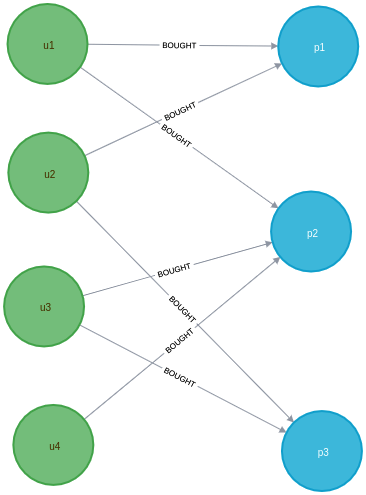In the case of bipartite graphs, the previous methods don't work well. Indeed, the algorithms consisting of closing the triangle are not appropriate.
Consider, for instance, the following graph:

This graph can be created using the following Cypher:
CREATE (u1:User {name: "u1"})
CREATE (u2:User {name: "u2"})
CREATE (u3:User {name: "u3"})
CREATE (u4:User {name: "u4"})
CREATE (p1:Product {name: "p1"})
CREATE (p2:Product {name: "p2"})
CREATE (p3:Product {name: "p3"})
CREATE (u1)-[:BOUGHT]->(p1)
CREATE (u1)-[:BOUGHT]->(p2)
CREATE (u2)-[:BOUGHT]->(p1)
CREATE (u2)-[:BOUGHT]->(p3)
CREATE (u3)-[:BOUGHT]->(p2)
CREATE (u3)-[:BOUGHT]->(p3)
CREATE (u4)-[:BOUGHT]->(p2)
Users u1 and u2 both bought product p1. u1, u2, and p1 are therefore three corners of a possible triangle. However, closing this triangle by adding an edge between u1 and u2 is not possible since...
































































